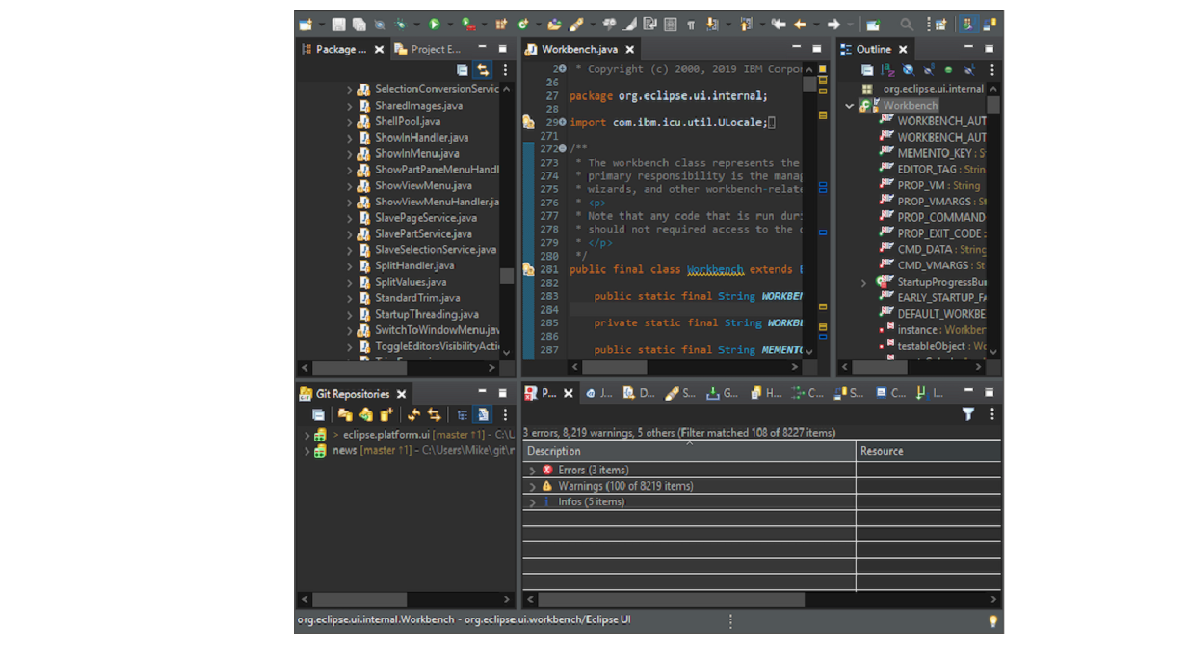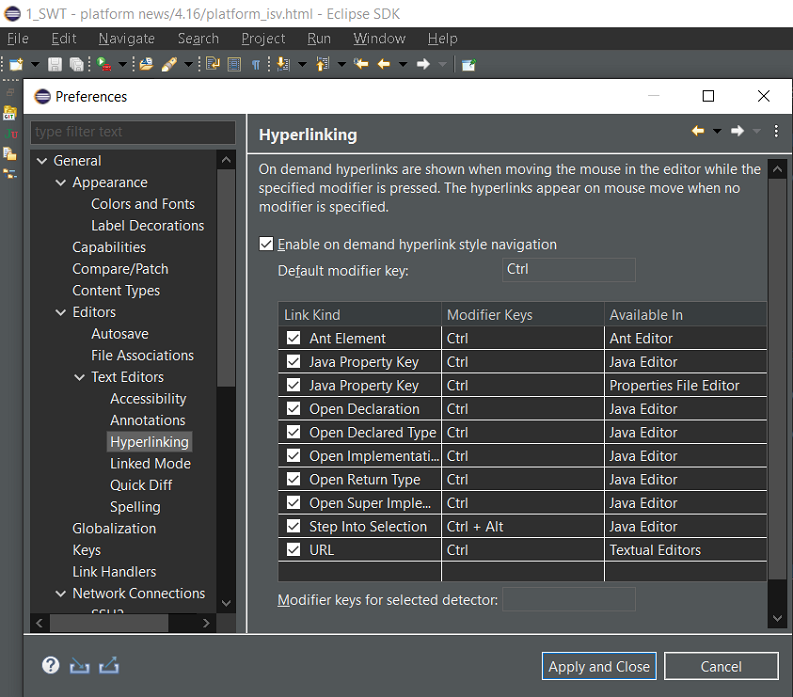
Few days ago the Eclipse Foundation announced the launch of the new version of Eclipse 4.16, version which they baptized as "The Eclipse SDK Project". Eclipse SDK comes with new features for Java developers, a new API on the platform and in Equinox, new features for plugin developers.
For those who are unfamiliar with Eclipse, they should know that this is a software platform composed of a set of open source programming tools cross-platform to develop what the project calls "Rich Client Applications" as opposed to browser-based "Light-Client" applications.
This platform has typically been used to develop integrated development environments, such as the Java IDE called Java Development Toolkit (JDT) and the compiler (ECJ) that is delivered as part of Eclipse (and that are also used to develop Eclipse itself. ).
About the new version of Eclipse 4.16
In this new version, one of the attractions is Eclipse's "dark" theme which now uses native dark scroll bars and has removed the software solution for the editor area.
The issue default "Light" by Eclipse has been updated to better align with the default theme Windows 10. As for square tabs, they are now used by default for views in the IDE.
While for the news part, it is the adding the new option (enabled by default) is available on the installation / upgrade preferences page.
Esto allows additional verification when installing, updating or uninstalling content via standard dialog boxes, so the operation will fail with a helpful message if the drives you are installing require a newer or incompatible Java runtime than the one currently used to run the IDE.
In terms of screens, dialog boxes and toolbar, you can now create missing folders directly through the wizard "New file", without explicitly creating folders beforehand.
Eclipse now supports font ligatures on Windows, which was already compatible with Linux and macOS. You can specify the font with ligatures that text editors will use using the preference: General> Appearance> Colors and Fonts> Basic> Text Font.
Finally, hea preference to rename the resource online or use the dialog added in 4.15 as an option button and has now been changed to a checkbox.
You can now use the "Select All" or "Deselect All" buttons to select or deselect all breakpoint markers while importing breakpoints.
On the part of the improvements for Java, we can find that for Eclipse JDT version 14 is supported. The release notably includes the following Java 14 features: folders, text blocks, expression change, and finally model matching for "Instanceof".
The option to enable preview features must be enabled for language preview features.
Additionally, you can also change the default severity (warning) of the preview functions compilation problem in the open project properties dialog.
Starting with Eclipse 4.16, SWT no longer needs to remove colors as they are not allocated operating system resources. In the same way, SWT / GTK no longer supports GTK versions prior to 3.20.
In addition, several modifications have been made to improve the theme experience black on windows, where the black theme compatible with the operating system is not yet fully developed. Finally, there is a warning for Java developers on Windows.
Finally if you want to know more about it about this new version, you can check the details by going to the following link.
Download
For those who are interested in installing Eclipse and related resources, they should know that they can be downloaded from the official page of the Eclipse project in its download section.
Also, the Eclipse installer and other packages can be downloaded from the Eclipse installer page.
Download the Eclipse IDE installer
